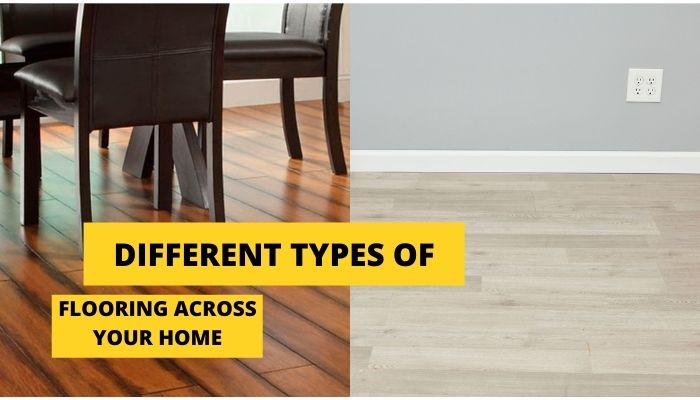
The process of planning a home redesign can be exciting, and you may fall in love with two distinct flooring selections. Fortunately, the beauty of home design and remodelling is that you are not limited to a single style.
There are many ways to make your home feel like a continuous work of art by coordinating different flooring options throughout it. The rooms in your house serve other functions and styles, so why should the floors be the same? From the main bedroom to the laundry room, the kitchen, or your home gym, the spaces in your house serve different purposes and styles, so why should the floors be the same?
Here are four suggestions for making you remodel more enjoyable while still coordinating practical flooring solutions for your lovely new home.
There are many several types of flooring to pick from when it comes to constructing your home. Natural stone tiles (such as those found in Marmol's catalogue), beautiful wood flooring, carpet, and cement each have their place and function in your home.
Cement flooring, for example, is perfect for drainage in your laundry room. Carpeting will transform dingy, drafty basements into warm and appealing modern areas. Natural stone flooring, such as marble, gives kitchens, baths, and living rooms a clean and abundant impression.
Stick to the same sort of flooring when covering a vast living space. If you want to mix marble tiles with wood flooring, for example, make sure you're not mixing various wood types of marble types. Using the same two different types of flooring in the right places will give your home a sense of cohesion.
While you can certainly combine different textures, keep in mind how the colours complement one another. For example, choosing a dark hardwood floor to contrast with a stark white tile may be unsettling and should be avoided.
Choosing tiles and wood with similar undertones is one method to ensure that your diverse flooring selections flow smoothly throughout your home. If you select dark hardwood, make sure your matching tiles are beige or brown to mix the textures seamlessly.
Having more than two distinct floors collide creates visual confusion and might make your area appear cluttered or mismatched. Do not bother to use more than two different types of material per floor of your home when making design decisions.
The living room can have sculpted carpet, wood, cork, bamboo, laminate, tile, or stone flooring, accessible from the entrance. The idea is to match the floor's hue to the entryway's, as the two flow together. It isn't required to have a perfect match as long as the colours combine.
Consider an inset patch of carpet bordered by hardwood or a colourful area rug to break up the monotony in huge spaces. A dining room with hard floorings, such as tile or stone, is practical. Wood scratches from repeated chair movement and carpet stains from food and liquid spilt on the floor.
The flooring in your family room, significantly if it extends into the kitchen, should maintain the colour scheme and be similar to the kitchen flooring. Consider a sculpted finish in a darker hue to eliminate stain stains and footwear if you want to carpet.
In high-traffic areas, wood, tile, and stone function well. Tile, slate, cork, or stone should be used in the kitchen, and it should match the colour scheme of the rooms that lead into it. If water overflows and causes warping, stay away from wood and laminate.
Here's where you can get a little more creative with your flooring. Children's rooms should have hard-surfaced flooring because of the spills that children and teenagers are prone to. Distressed laminate is less expensive than wood and can withstand much wear and tear.
If the family bedrooms are separate from the main living areas, the colours can be influenced by the room's design, as long as they do not conflict with the hallway flooring. If you paint the hallway a neutral colour, preferably in wood, laminate, or tile, your options for bedroom flooring expand.
The master bedroom should be coordinated, especially if it has an en-suite bathroom. Select from soft carpets, wood, tile, or laminate flooring. If you choose a hard surface flooring, use area rugs on either side of the bed to offer a warm walkway.
Combine the colours with the bathroom flooring you've chosen. A false Oriental carpet with rubber backing provides elegance and colour in the bathroom's centre.
Hard surface flooring, whether hardwood or Luxury Vinyl Tile, is as popular as ever because of its clean look, traditional style, and durability. While our parents' homes may have had wall-to-wall carpeting, it's much more usual these days to see a modern home with clean, straight lines and stylish accents created by a hard surface.
The carpeting may have lost some of its lustrs, but it remains a popular choice, particularly in bedrooms and other different areas where you want a bit more traditional comfort. Modern designs avoid carpeted sections, opting instead to use luxurious, soothing carpets to accent critical places.
Tile is a common choice for many rooms in the home and continues to be so. Of course, tile comes in a wide range of designs and styles, so it's crucial to pick the perfect flooring options for your home and know when it's appropriate to use it instead of wood or carpet.
 Call Now
Call Now